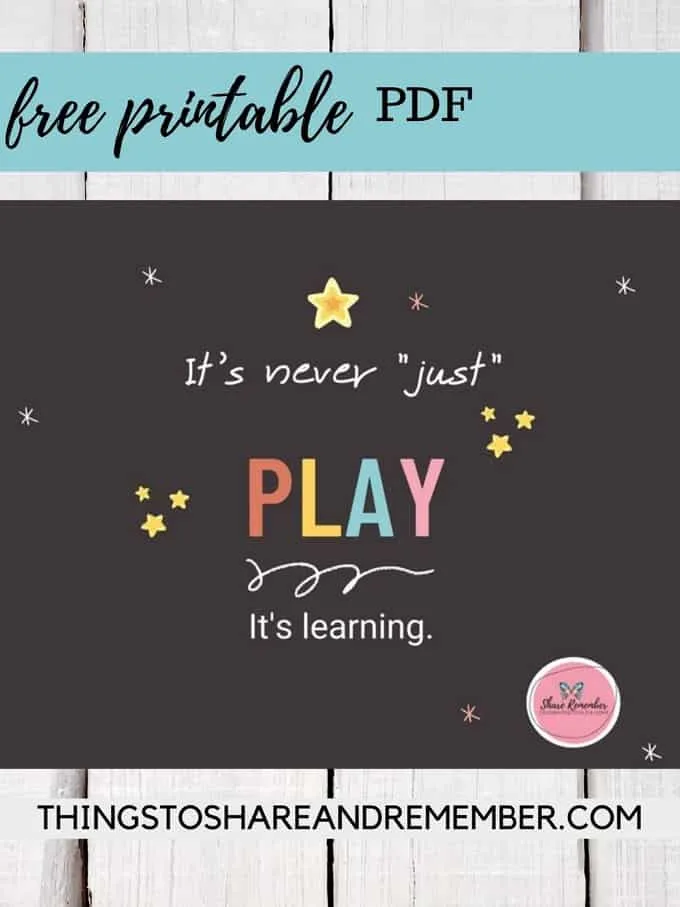We’re all familiar with play but not everyone understands that it’s never “just” play. In fact, it’s learning. Play and learning go hand in hand. Great care involves lots of play so the children’s needs are being met physically, emotionally, and cognitively. For young children, learning is not sitting at a desk for lessons, using flashcards or writing on worksheets. While there may be value in that for older children, it isn’t how young children learn. Children of all ages benefit from play, but free play without rules is common, especially among children ages 2-6. Read more about play below and download a free printable poster.

See all of my free printables here >> Free Printables from Share & Remember
Play & Learn

Childhood is all about play, learning and growing. Play is spontaneous, child-led and fun!
What Happens During Play
During play, children are making choices, experimenting and learning about their world.
During play, children are making choices, experimenting and learning about their world.
While playing, children learn to regulate their emotions, practice social skills and develop self-control.
Types of Play
There are different types of play. Unoccupied play is when a child is free to move, think and image. It might not look like actual play but it’s a kind of play.
Children may play independently or engage in solitary play.
You may see children playing side by side. They may be onlookers watching play.
In associative play, children begin to play together but do not have the same goal of activity such as playing house.
With cooperative play, children begin to play together and we see teamwork.
Preparing to Play
We know play isn’t meaningless so we need to give children time to explore and discover.
They also need a safe space that’s rich with open-ended materials to handle and manipulate, including nature items, loose parts, musical instruments, and open-ended materials.
During Play
Be nearby to supervise and answer questions. But don’t interrupt! Instead, observe. Listen to the language, the thoughts and ideas. Watch for new skills and opportunities to introduce concepts. Guide and redirect.
During play, child development is taking place. Children are learning social emotional skills, literacy, math, scientific reasoning, vocabulary and physical skills. Around 4 years old, children begin to develop an identity outside of their families, so it’s important for children to interact with peers and may be ready for group activities.
I’m sure you agree, it’s never just play! READ: 10 Things Every Parent Should Know About Play
I’m pleased to share this free printable poster. It looks amazing printed and laminated on the wall in my child care. Enjoy!

Read this article from NAEYC: 10 Things Every Parent Should Know About Play
